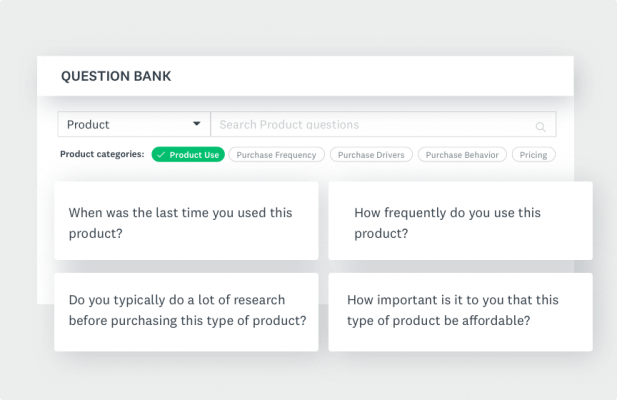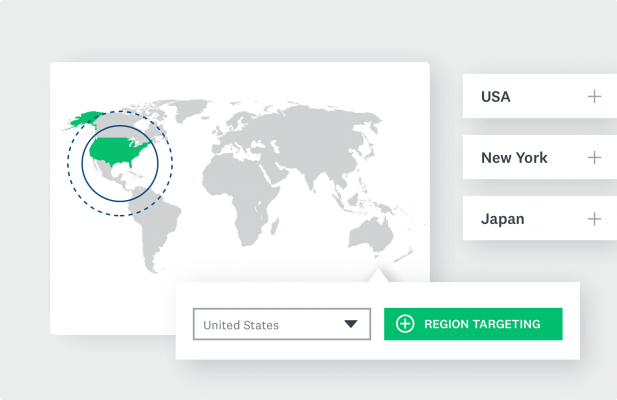A complete guide to demographic segmentation
How to use demographic segmentation to target your audience and improve your marketing strategy.

As marketers, we need to understand our audiences deeply to effectively sell to them. Demographic segmentation is a tool marketers can use to better understand their target market. Demographics define who people are within your target market and divide them into smaller groups based on shared characteristics, such as age, gender, and income level.
Marketing demographics and segmentation enable marketers to identify efficiencies, increase personalization, and build customer loyalty. Read on to learn about why demographic segmentation is worth it for your business.
What is demographic segmentation?
Demographic segmentation divides a target market into smaller groups based on shared characteristics, such as age, gender, income level, education, and family size.
Segmenting your market into smaller groups allows you to create more personalized messaging, tailor products or services to specific needs, and improve the efficiency of your marketing campaigns by focusing on the audiences most likely to convert.
Specific categories of people become target demographics for marketers, enabling them to sell to these groups more effectively. It assumes that smaller groups have similar preferences, making it easier to sell to them.
Why use demographic segmentation in marketing?
Demographic segmentation enables marketers to be more specific about their target market. Demographics include age, income, occupation, and other similar variables that describe a group of people.
Some of the most common reasons businesses use demographic segmentation include:
- To discover new market opportunities. Demographic analysis can reveal overlooked groups that present strong growth potential.
- To understand changes in customer preferences and behaviors. Businesses can stay ahead of consumer trends by tracking how different demographics respond to products or services.
- To create buyer personas. Demographic data provides insights into what certain customer groups like and dislike, allowing businesses to create realistic personas.
- To identify the most profitable customer groups. Focusing on high-value segments ensures a business’s marketing spend is allocated effectively to generate the best ROI.
- To tailor products or services. Meet the unique needs of market segments by tailoring products or services. Businesses can adjust features, pricing, or packaging to better align with customer preferences.
- To develop targeted marketing messages. Messaging that speaks directly to a specific audience segment is typically more effective than generalized marketing.
- To improve customer retention with personalized experiences. Customers feel valued and become loyal to a brand when a business addresses their specific needs.
Identify your target audience
Find out in minutes with SurveyMonkey Consumer Segmentation.
Benefits of demographic segmentation
Demographic segmentation can be extremely impactful for a business’s marketing strategy. It helps marketers understand their target audiences like the back of their hands. Let’s take a closer look at some of the advantages of segmenting by demographics.
Easy to collect
By using a survey, marketers collect data that is specific to their business goals. Marketers can design a custom survey or use an existing template.

In addition to surveys, government agencies like the Bureau of Labor Statistics provide household, income, education, and health data used for marketing strategies and business goals.
Because of the widespread use of smart devices, granular data is available from apps that collect a wide variety of data, including photos, travel patterns, hospital wait times, and virus contact tracing. Now in use for complex clinical trials or academic studies, these apps capture vast amounts of demographic data at a specific point in time or over several time periods.
Personalized marketing messages
Marketers speak to their target audience using messages that appeal to their specific demographic segments. Having a strong understanding of their demographic segments will allow marketers to create key messaging content that speaks to their target audiences and forms the basis of their marketing strategy.
Marketers use these concepts to develop a consistent flow of marketing campaigns, ads, social media posts, packaging, and other messaging that raise customer awareness. Messaging must be consistent across all channels to demonstrate the value their brand provides to their target market.
A consistent brand position will build value for a company. For instance, Amazon, Microsoft, and Spotify are three of the biggest growing brands that provide the value their target markets desire: empathy, agility, and affinity. Microsoft empathizes with customers’ needs, providing them with leading software products.
Amazon customers like agility, the ability to quickly adapt to changing times and new products. Spotify customers are incredibly loyal, creating an affinity relationship with Spotify's music service.
Improve advertising effectiveness
Over 95% of new product launches fail. Companies that use demographics to define their target market and create consistent messaging have a greater chance of survival.
U.S. advertisers spend over $250 billion to get our attention. Companies like Amazon, Procter & Gamble, and Walt Disney (three of the biggest advertisers) want to make sure they advertise to the right people.
For instance, the Walt Disney Company might appear to target children, but it targets the entire family, including children, tweens, teens, and adults. “You’re dead if you aim only for kids. Adults are only kids grown up, anyway," said Walt Disney.
Identify potential markets for your product
Surveys can be used to identify specific demographic groups and understand their purchasing behavior, including how much they will pay and how frequently they will buy your product.
Companies with existing products frequently use surveys to see how their customers’ buying behaviors change or identify new market trends. By analyzing survey data across different demographic segments, companies can invest their resources in the right products and target the right audience segments.
Ready for powerful insights on your consumer segments?
SurveyMonkey Consumer Segmentation makes it easy to identify the right target and improve marketing effectiveness.
Types of demographic segmentation
There are a handful of types of demographic segmentation to consider. These include age, gender, income, occupation and employment, ethnicity, geography, education level, and marital status.
Age
Age is usually an indicator of customer preferences. However, to avoid asking for personal data, surveys ask people to identify with an age range. Sample answers include:
- Under 18 years
- 18-29 years
- 30-39 years
- 40-49 years
- 50-59 years
- 60-69 years
- 70-79 years
- 80-89 years
- 90 or older
Surveys can be structured to collect data about one person or an entire household. Marketers like to know how many people live in a household and what their ages are. Family size and age ranges help marketers understand household habits and buying preferences across various age groups.
Survey respondents are frequently categorized by generation. Gen X, Millennials, Gen Z, and Baby Boomers all have different preferences and attitudes. Companies use generational demographic variables to create marketing messages, packaging, and campaigns that appeal to specific age groups. For instance, young age groups are typically more familiar with technology, but Baby Boomers may need less tech and are less interested in it.
Gender
Sexual Orientation and Gender Identity (SOGI) questions ask for personal information and should be carefully considered. Understanding and communicating your survey’s purpose is critical to help people feel comfortable answering these questions.
Depending on the nature of your survey, gender questions may include:
- What is your sex? Male or Female
- What is your gender identity? Woman, Man, Trans Man, Trans Woman, Genderqueer, Agender, Other (please specify)
- What is your sexual orientation? Asexual, Bisexual, Gay, Heterosexual or straight, Lesbian, Pansexual, Queer, Other (please specify)
Gender can make a difference in both B2C and B2B marketing. For instance, one study showed that when women attend a business event, they want to be inspired, educated, and network with peers. However, men like business events to find out about the latest and greatest products.
Understanding the gender of your audience will impact how successful your product, service, or event will be. Marketers are also using these questions to become more inclusive and develop products designed for SOGI differences.
Related reading: How to ask gender survey questions
Income
Income plays a vital role in determining if people can afford a company’s products, especially for luxury goods retailers targeting upper-income demographics. Income questions can include:
- Household Income - How much total combined money did all members of your household earn last year?
- Personal Income - How much do you earn from your job or salary?
- Income Range - $0 to $9,999, $10,000 to $24,999, $25,000 to $49,999, $50,000 to $74,999, $75,000 to $99,999, $100,000 to $124,999, $125,000 to $149,999, $150,000 to $174,999, $175,000 to $199,999, $200,000 and up, Prefer not to answer.
- Home Owner/Rent - Are your living quarters owned or being bought by you or someone in your household, rented for cash, or occupied without payment of cash rent?
Marketers use income demographics to target their advertising, especially for high-end products. For instance, the Tesla Model X targets male customers who earn over $143,000 per year, over twice the average U.S. household income. Companies target their product design and marketing campaigns to people who can afford a luxury car with a high price tag.
Occupation and employment
Occupation demographics indicate if a person is employed, to what extent, and what occupation they pursue. Employment refers to the frequency with which a person works, and occupation describes their field of work. Companies can design custom surveys or gather public data from the Bureau of Labor Statistics.
- Employment: Which of the following categories best describes your employment status?
- Employed and working 40 or more hours per week, Employed and working 1-39 hours per week, Not employed and looking for work, Not employed and NOT looking for work, Retired, Disabled or unable to work
- Occupation: Which of the following best describes your current occupation?
- Healthcare, Business, Education, Protective Services, etc.
- Role: Which of the following most closely matches your current job title?
- Intern, Entry Level, Analyst / Associate, Manager, Senior Manager, Director, Vice President, Senior Vice President, C-level executive (CIO, CTO, COO, CMO, etc.), President or CEO, Owner, Other (please specify)
A person’s occupation and role indicate their specialized skills and how they make money. Employment shows how consistently they are working in their occupation. Based on these two factors, marketers use this information to define their target market’s income level and professional interests.
B2B marketers rely heavily on occupation demographics to target customers with specific professional skills or interests. In B2B marketing, occupation and role define what industry they work in and their decision-making ability. B2B marketers target people who make buying decisions, making their role or title an essential demographic.
Ethnicity
Understanding a group’s ethnicity helps to create products that appeal to their common beliefs and interests. Potential questions include:
- What is your racial or ethnic identity? (Select all that apply)
- What is your place of birth?
- What languages do you speak?
Marketers can position new products and services to these ethnic groups, including food, cosmetics, and personal items. According to research, Black, Asian, Latinx, Native American, and multicultural groups are all expected to have increased buying power.
Geography

Geographic demographics segment buyers based on where they live. These regions can be as large as a country or as small as a zip code or a neighborhood. Typical questions include:
- What country do you live in? (U.S., Canada, Mexico, etc.)
- What region do you live in? (Midwest, Northeast, Southeast, Southwest, West)
- What is your 5-digit zip code? (zip code of your primary residence)
Preferences vary by region, giving marketers a better opportunity to tailor their products and services. Country and regional differences influence how marketers develop and sell their products.
Direct mail advertising uses zip codes to target potential customers for local retailers. These businesses can focus their ad budgets on residents and income levels who are likely to purchase their products. Geography can indicate a person’s income level and preferences, allowing marketers to target their audience better.
Level of education
Education demographics can include the education level, languages, and occupations of the respondent and their family members. A typical survey question and answer options include:
What is the highest level of school you have completed or the highest degree you have received?
- Less than a high school diploma
- High school diploma or equivalent (e.g., GED)
- Some college but no degree
- Associate’s degree
- Bachelor’s degree
- Master’s degree or above
Education demographics are critical for media and book publishing companies. In general, the more educated people are, the more often they read. In 2019, over 90% of people with a college degree or more read books. However, only 75% of those who had some college and 61% of those who attended high school read books.
Marital status
Marital status influences people’s preferences and buying habits. Typical survey questions include:
- Are you now married, widowed, divorced, separated, or never married?
- Which of the following best describes your current relationship status? Single and never married, In a domestic partnership or civil union, Separated, Divorced, Widowed, Married, Other (please specify)
Marital status may influence income and decision-making. For B2B marketers, this demographic data is critical to realtors, construction companies, and appliance manufacturers who need to tailor their products to this demographic.
Marketers create more specific demographic groups by combining marital status, age, income, and other variables. Life stages are a type of demographic segmentation example that includes:
- Solitary working retiree
- Single, no children
- New Nesters, children under 6
- Full Nest, children over 16
- Retired couples
Do you know the demographics of your target audience? SurveyMonkey Audience will simplify the survey process and deliver high-impact results.

General Population (Medium Sample)
- All Genders (Census)
- All Ages (Full Census)
- All Incomes
- 500 Responses, United States (USA) - SurveyMonkey

Full-Time Employees
- All Genders (Census)
- All Ages (Basic Census)
- All Incomes
- Employed Full-time
- 250 Responses, United States (USA) - SurveyMonkey

Consumer Shoppers
- All Genders (Census)
- All Ages (Basic Census)
- All Incomes
- Primary Decision Maker in Household
- 250 Responses, United States (USA) - SurveyMonkey
How to collect data for demographic segmentation (4 methods)
Now that you understand what demographic segmentation is and why you should do it, you’re probably wondering how to collect the data you need. There are several methods to gather relevant information for demographic segmentation.
1. Customer surveys and questionnaires
Online surveys are one of the best ways to gather demographic information from your target audience. Surveys are a reliable data collection method frequently used by businesses to segment their audiences.
With surveys and questionnaires, you can directly ask customers about their age, gender, income level, education, and other relevant characteristics.
With SurveyMonkey, you can easily design professional surveys, distribute them across multiple channels, and analyze the results in real time.
2. Website and app analytics
You can utilize website tracking and app usage analytics to gather valuable demographic information, including geographic location, device type, and browsing behaviors. This data can provide important insights for marketing teams.
Additionally, integrating surveys into digital touchpoints can help address gaps by collecting more specific details.
3. Customer databases and CRMs
Customer relationship management systems (CRMs) and databases offer a wealth of demographic information. Combining insights from your CRM with survey responses provides a complete picture of your audience.
4. Social media insights
Social media platforms have built-in analytics that can highlight demographic trends among engaged users to inform your marketing strategy.
Advanced SurveyMonkey tools allow you to go beyond surface-level metrics and collect meaningful demographic data directly from your target audience. Whether you’re building buyer personas, testing new product ideas, or refining your campaigns, SurveyMonkey makes it easy to gather, analyze, and apply the insights that matter most.
Demographic segmentation question examples
Surveys are an easy way to collect demographic data. They are available in our survey templates to ensure the results meet your project’s needs. Demographic segmentation questions include the following.
| Question | Reason |
| What is your age? | Age plays a big role in refining your marketing strategies, as people of different generations have various preferences, values, and spending habits. |
| What is your household income? | Knowing the household income of different demographics enables you to market products in the right price range to the right groups. |
| What is your highest level of education? | Education can influence preferences and lifestyle choices that can be applicable to refining marketing campaigns, such as professional service offerings or luxury goods. |
| How many members are in your household? | The number of household members can influence buying decisions, household spending, and the need for family-oriented products or services. |
| What is your gender preference? | Gender identity segmentation can be especially beneficial for tailoring product lines, messaging, and advertising to resonate authentically with each group. |
| Do you own or rent your home? | Home ownership data helps businesses identify customers who may be more interested in long-term investments versus flexible or transitional solutions. |
| In what zip code is your primary residence? | Geographic location impacts cultural preferences, local trends, and regional marketing strategies. |
| Are you married/divorced/single? | Marital status helps businesses understand lifestyle dynamics that may influence purchasing decisions. |
| What is your ethnicity/race? | Race and ethnicity data can be used to identify cultural preferences, traditions, and consumer behaviors that inform more inclusive and relevant campaigns. |
| How many children do you have? | Family size affects buying habits and demand for products and services such as education, healthcare, entertainment, and household goods. |
In addition to demographics, you may also use psychographics, behavioral, and geographic questions to categorize people. Marketers combine the answers to these questions and create groups of people with shared attributes and preferences. Based on these groups, they will clarify who their target market is and define their buying preferences.
Demographic segmentation vs. targeting
Demographic or market segmentation refers to breaking down a larger group of people into smaller segments with similar needs, requirements, and interests. Companies may use different methods to group their segments apart from demographics, including psychographics, lifestyle traits, and customer behaviors. The goal is to find common characteristics that represent your potential customers.
Demographic targeting involves advertising to specific groups based on their demographics to reach the most receptive audience. A target market allows companies to focus their resources, perform in-depth market research, and create the ideal messaging and packaging that will appeal to them.
| Segmentation | Targeting | |
| Purpose | To identify distinct customer groups within a market. | To maximize ROI by concentrating resources on the most profitable or strategic segments. |
| Scope | Broad and exploratory—identifying all possible customer groups. | Narrow and selective—choosing one or more segments to focus on. |
| Approach | Research-oriented: Collects and analyzes data to identify patterns and similarities. | Strategy-oriented: Applies marketing techniques to appeal directly to certain segments. |
| Outcome | Clearly defined customer groups | A focused marketing campaign that will resonate with a specific group |
| Example | A retail brand divides its audience by age (Gen Z, Millennials, Gen X, Baby Boomers). | The brand decides to run a specific advertising campaign targeted at Millennials. |
How to filter and compare your data by demographics using SurveyMonkey
You can easily analyze your survey results and sort responses by demographic variables using SurveyMonkey’s tools to understand your data and create insightful results.
1. Create filter rules
When designing your survey, think about how you want to filter your results. If you wish to group on specific demographic variables, you can include a question in the survey that will allow you to filter by that group.
For example, if you want to understand the income levels associated with a zip code, you can filter for those demographics.
You can use single or multiple filters. Filter types include:
- Question and answer. Open-ended and closed-ended questions can be used as filters.
- Collector. Show answers based on who collected the information.
- Completeness. Show answer completeness, including Complete, Partial, Disqualified, or Over Quota.
- Time period. View responses submitted on or between a specific time frame.
- Respondent metadata. Filter by respondent metadata (if anonymous responses are turned off and survey invitation sent via email invite): response time, IP address, email address, first name, last name, or custom data.
- Custom data. If you used any custom variables in your survey, sort by a common variable or unique name.
- A/B test. If you used an A/B test in your survey, show only respondents who saw a particular variable.
- Tag. For surveys using open-ended responses, you can manually tag individual responses and sort by specific tags.
- Language. For multilingual surveys, filter by language.
- Sentiment. Filter by the sentiment of open-ended text responses: Positive, Neutral, or Negative.
- Range. If you choose to show people their scores and set up custom score ranges when creating a quiz, you can sort responses by those ranges with this filter.
2. Compare rules
The Compare rules feature lets you choose two or more answer options from a single question and view them side-by-side. This feature is valuable for demographic variable analysis, easily comparing data that clarifies your target audience.
For example, if you include a question in your survey asking people their age, you can create a compare rule to view each age range’s results. This will show how different age groups responded to questions in your survey.
3. Crosstabs
As part of our paid feature, Crosstab reports let you choose questions and answer choices to display in a table for easy comparison across multiple questions and share them with other people. A table shows how many times an answer choice was selected, the percentage of responses, and the total number of responses per answer choice.
If you want to compare two or more answers from a single question, you can use a compare rule. Crosstab reports are best when you want to compare multiple questions and answer choices all at once.
Conduct market research with SurveyMonkey
Demographic segmentation is a key strategy for reaching your target audience effectively. Understanding your customers, their needs, wants, and preferences, allows you to target them profitably.
Our expert solutions and research services set your business up for success. Now that you understand how demographic segmentation works, it’s time to put it into practice. Get started with SurveyMonkey Audience today!
Get started with your market research
Global survey panel
Collect market research data by sending your survey to a representative sample
Research services
Get help with your market research project by working with our expert research team
Expert solutions
Test creative or product concepts using an automated approach to analysis and reporting